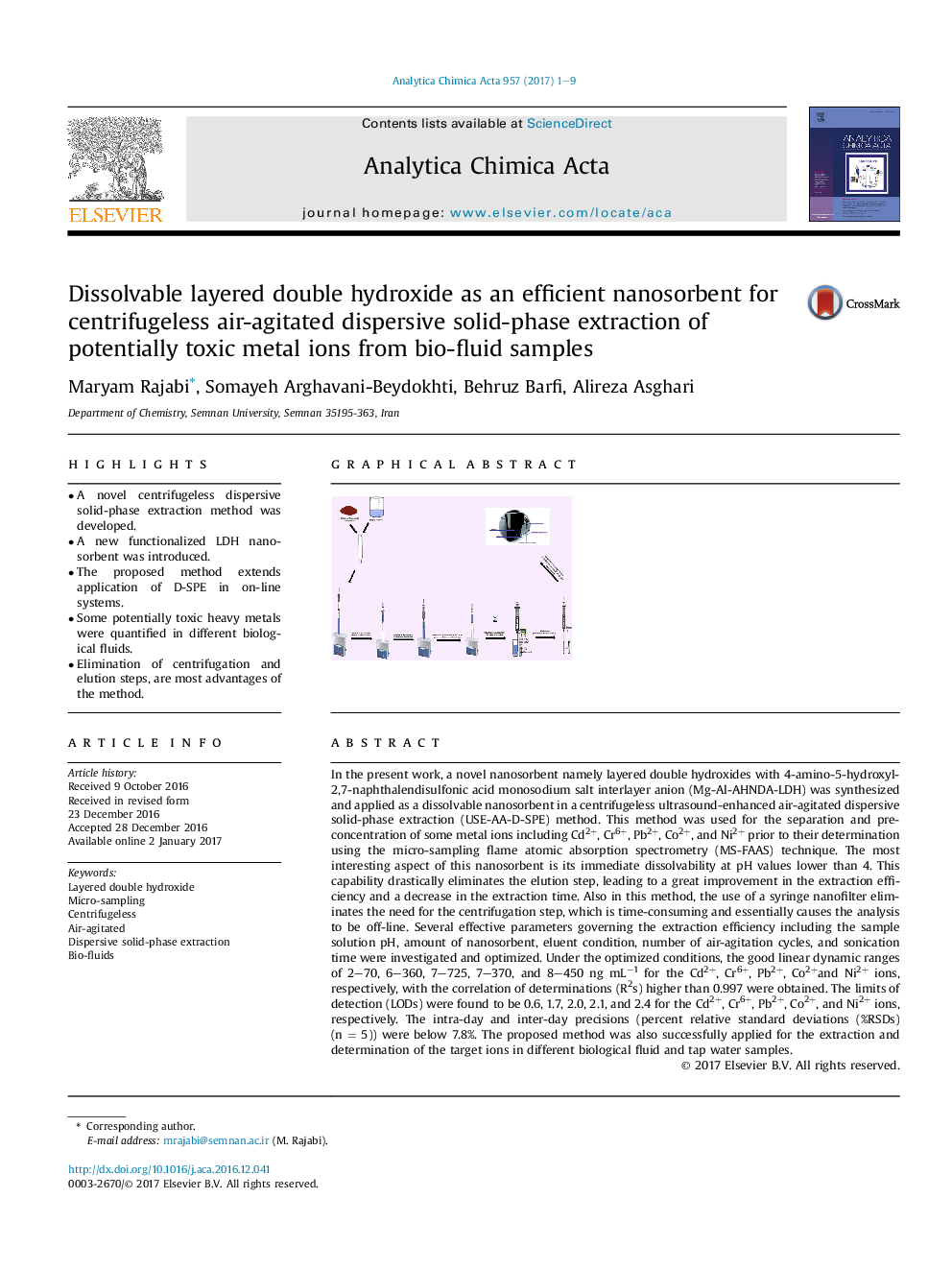| Article ID | Journal | Published Year | Pages | File Type |
|---|---|---|---|---|
| 5131167 | Analytica Chimica Acta | 2017 | 9 Pages |
â¢A novel centrifugeless dispersive solid-phase extraction method was developed.â¢A new functionalized LDH nanosorbent was introduced.â¢The proposed method extends application of D-SPE in on-line systems.â¢Some potentially toxic heavy metals were quantified in different biological fluids.â¢Elimination of centrifugation and elution steps, are most advantages of the method.
In the present work, a novel nanosorbent namely layered double hydroxides with 4-amino-5-hydroxyl-2,7-naphthalendisulfonic acid monosodium salt interlayer anion (Mg-Al-AHNDA-LDH) was synthesized and applied as a dissolvable nanosorbent in a centrifugeless ultrasound-enhanced air-agitated dispersive solid-phase extraction (USE-AA-D-SPE) method. This method was used for the separation and preconcentration of some metal ions including Cd2+, Cr6+, Pb2+, Co2+, and Ni2+ prior to their determination using the micro-sampling flame atomic absorption spectrometry (MS-FAAS) technique. The most interesting aspect of this nanosorbent is its immediate dissolvability at pH values lower than 4. This capability drastically eliminates the elution step, leading to a great improvement in the extraction efficiency and a decrease in the extraction time. Also in this method, the use of a syringe nanofilter eliminates the need for the centrifugation step, which is time-consuming and essentially causes the analysis to be off-line. Several effective parameters governing the extraction efficiency including the sample solution pH, amount of nanosorbent, eluent condition, number of air-agitation cycles, and sonication time were investigated and optimized. Under the optimized conditions, the good linear dynamic ranges of 2-70, 6-360, 7-725, 7-370, and 8-450 ng mLâ1 for the Cd2+, Cr6+, Pb2+, Co2+and Ni2+ ions, respectively, with the correlation of determinations (R2s) higher than 0.997 were obtained. The limits of detection (LODs) were found to be 0.6, 1.7, 2.0, 2.1, and 2.4 for the Cd2+, Cr6+, Pb2+, Co2+, and Ni2+ ions, respectively. The intra-day and inter-day precisions (percent relative standard deviations (%RSDs) (n = 5)) were below 7.8%. The proposed method was also successfully applied for the extraction and determination of the target ions in different biological fluid and tap water samples.
Graphical abstractDownload high-res image (145KB)Download full-size image
